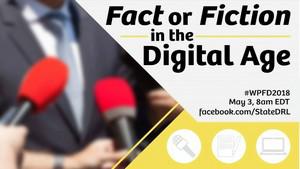Fake newsFraudulent news, disinformation become “new normal” political tactics
New report warns of the risk of fraudulent news and online disinformation becoming a normalized part of U.S. political discourse. The report sounds an alarm that fraudulent news and online disinformation, which distort public discourse, erode faith in journalism, and skew voting decisions, are becoming part of the toolbox of hotly contested modern campaigns.

Fake news becoming more prevalent // Source: state.gov
Warning about the risk of fraudulent news and online disinformation becoming a normalized part of U.S. political discourse, PEN America the other day released Truth on the Ballot: Fraudulent News, the Midterm Elections, and Prospects for 2020.The report provides an analysis of efforts to counter fraudulent news in the 2018 midterm election cycle, and stresses the importance of social media platforms, candidates and political parties dramatically stepping up efforts to keep fraudulent news from badly polluting the 2020 election cycle.
PEN America says that the 50-page Truth on the Ballotcatalogs and evaluates the steps taken by internet platforms, government agencies, and political parties to curb the influence of fraudulent news in the aftermath of the 2016 election cycle; examines current legislative proposals to regulate advertising transparency online; parses the role fraudulent news played in the 2018 midterm election cycle; and offers recommendations to stakeholders on vital steps to combat fraudulent news while protecting free expression rights ahead of the 2020 elections.
With fraudulent news and online disinformation distorting public discourse, eroding faith in journalism, and skewing voting decisions, Truth on the Ballotoffers a stark warning about the normalization of fraudulent news and disinformation as campaign tactics, sounding an alarm that such unsavory methods are becoming part of the toolbox of hotly contested modern campaigns. Micro-targeting capabilities have weaponized disinformation, so that what might once have passed muster as simply a hard-edged campaign message in the public arena can now move with stealthy, laser-like efficiency to reach sub-segments of voters while remaining invisible to the wider public or opposing campaigns.
